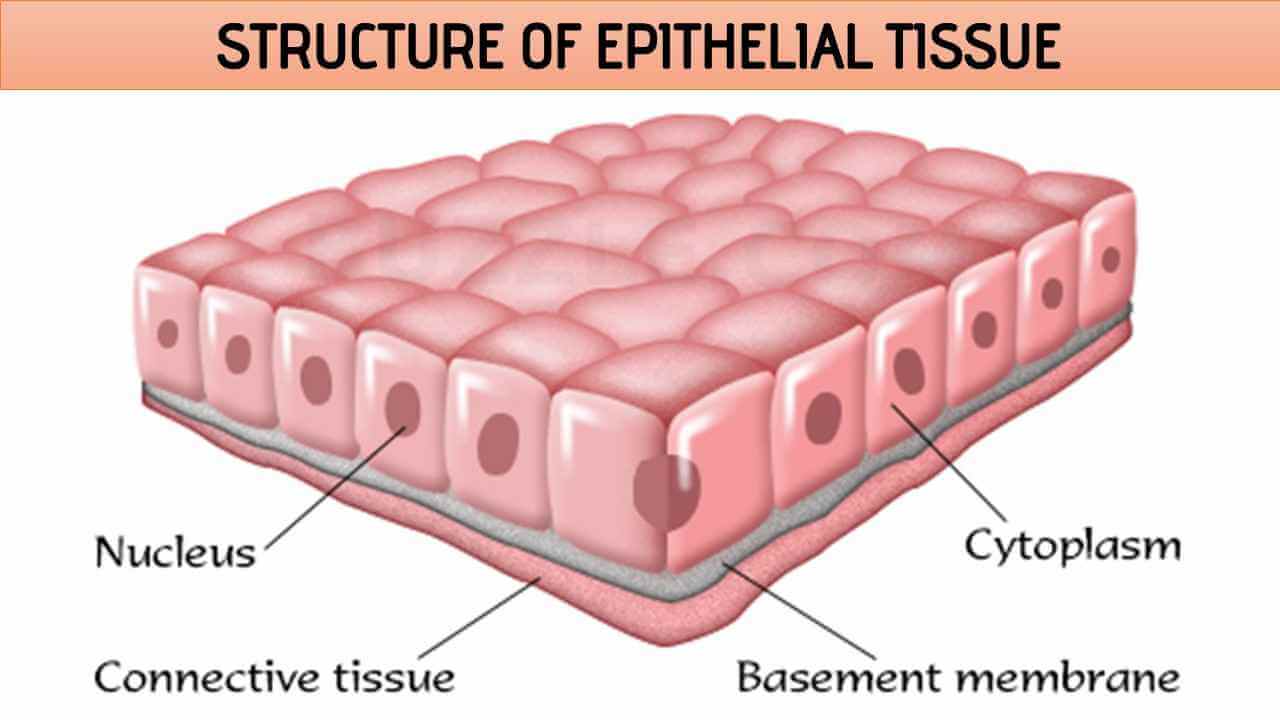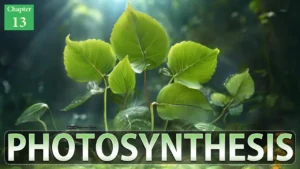Table of Contents
Structure of Epithelial Tissue
In this article we will discuss about the structure of epithelial tissue
Structure of Epithelial Tissue
- Epithelial tissue forms the outer covering of the skin and also lines the body cavity
- Epithelial tissue are either single-layered or multilayered.
- Epithelial cells are compactly arranged and there is no intercellular matrix
One surface of epithelial tissue is attached to membrane, which consists of fibres and polysaccharides called basement membrane - Basement membrane consist of 2 layers
- Basal lamina: made up of glycoprotein, which is secreted by epithelium cells
- Fibrous lamina: made up of collagen and reticular fibres are suspended in mucopolysaccharide
- Epithelium has tightly fitted continuous layer of cells. There are specialised junctions present between the cells of the epithelium, that link individual cells called intercellular junction
Cell junctions between epithelial cells
- Intercellular junctions are structures which provide adhesion and communication between cells
- Three main types of junctions that are found in epithelial cells
Tight junctions
- Plasma membrane of adjacent cells become fused to form tight junction
- Enzymes known as occludin help to fuse the membranes together
- Prevent the passage of molecules and ions
Adhering junctions
- The membranes of two adjacent cells aren’t fused together, instead, they adhere to each other in certain places only by actin filaments
- Enzyme known as cadherin helps to keep these filaments together.
- Keep the neighbouring tissues well cemented together
Gap junctions
- Gap junctions are channels that physically connect adjacent cells
- Protein known as connexins helps to form the pore for a gap junction between the cytoplasm of two adjacent cells
- Facilitate the movement of ions and molecules across the tissue
Functions of Epithelial Tissue
Protection
- The main functions of epithelial tissue is protection
- It protects the body cells against desiccation, invasion by pathogens, toxins and physical damage
Transportation
- Epithelial tissue regulates the exchange of substances between body and external environment as well as the internal exchange between different parts of the body
- The digestive, respiratory, and urinary system, it allows the exchange of molecules between the underlying cells and the body cavity, capillaries and ducts
Secretion
- Glandular epithelium secretes various enzymes and hormones
- Many endocrine and exocrine glands are made up of epithelial tissues
Absorption
- The epithelial lining of the digestive tract absorbs water and nutrients
- Cilia and microvilli on the surface of cells increase the surface area
Frequently Asked Questions: –
What are the examples of epithelial tissues?
Epithelial tissue covers external and internal lining of our body. Common example of epithelial tissue is skin. Our skin made up of stratified squamous epithelium. This type of epithelium usually has protective functions
What are the four main functions of epithelial tissues?
Protection, secretion, absorption and filtration is the four main functions of epithelial tissues
Is epithelial tissue avascular?
Yes, that means epithelial tissue lacks blood vessels. They get food and other materials from connective tissue through a basement membrane.
Where is epithelial tissue located?
Simple epithelial tissue found in lung alveoli, parietal layer of bowman’s capsule of kidney, inner aspect of tympanic membrane, mesothelium and endothelium.
You may also like: –
- Function of Cuboidal Epithelium
- Functions of Epithelial Tissue
- Nervous Tissue Characteristics
- Connective tissue: Definition, Structure, Types and Function
For more detailed information about Structural Organisation in Animals, download now full study material as PDF and if you want to learn more detailed information about Structural Organisation in Animals, visit YouTube Channel.



![[PPT] The living world Class 11 Notes](https://rajusbiology.com/wp-content/uploads/2024/06/PPT-The-living-world-Class-11-Notes-300x169.webp)
